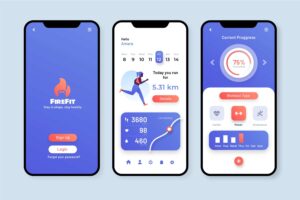Bugs are a common and often unavoidable part of software applications. They’re equally annoying for the developers as they are for the users. Finding and resolving bugs only to realize that they’ve let a critical bug slip through can be very challenging and hectic. That’s why it’s recommended to use bug management tools to record, track, and resolve bugs.
In your daily routine, you may come across mobile applications that are slow, faulty, and crash repeatedly. Often, it’s a mistake from the developer’s end but you should also be cautious. The saying “think before you click” applies here that can help avoid bugs in mobile apps. Following are some of the most common bugs in mobile applications:
Crash After Tapping a Button
You might have experienced it a lot while you’re using an app, your app crashed all of a sudden and you’re left wondering what went wrong. In most cases, it’s a hidden button in the app that, if accidentally pressed, causes the application to crash.
Push Notifications
Push notifications serve as alerts to keep you updated about the app activity and updates that matter to you. You as a user don’t want to miss out on them. And therefore, they’re given special attention by the developers. But sometimes, push notifications fail to work properly or notify at all. It can leave the user very frustrated.
Progress Indicator
The absence of a progress indicator can leave you thinking if you’ve successfully uploaded a document or not. You might end up re-uploading it or in a worst-case scenario, not upload it at all. The same is the case with screen loading, profile editing, uploading an image and many more. Therefore, letting the user know about progress is important. And to do that, the progress indicator should work properly, which in some cases, don’t.
Possibility of Tapping/Clicking the Button Repeatedly
The user is always in a hurry. It’s the developer’s or tester’s job to handle the possibility of rapid clicks. It can happen when sending a message or making a payment. In the worst-case scenario, you can get charged twice if you accidentally tapped the “pay” button twice. Therefore, these cases must be tested.
No Error Handling
Upon occurrence, the error message should always be displayed to the user. But make sure that the message contains relevant information that is easily understandable for the end-user. For example, instead of showing “401”, show “invalid login credentials”.
Page Layout
In some cases, if the app is not tested for all the devices and models, it may cause issues. Devices differ in sizes and resolutions. Therefore, it’s QA’s job to ensure that the app works fine on all devices and operating systems.
Conclusion
Bugs are often easy to detect but hard to remember. That’s why we’ve listed just six of them. For QA, it’s important to find and solve the problems before the app is released to the end-users. That’s what essentially bug management tools help you do.
Author Bio: Ray Parker is a Senior Marketing Consultant with a knack for writing the latest news in tech, quality assurance, software development, and testing. With a decade of experience working in the tech industry, Ray now dabbles out of his New York office.
Discover more from TheLatestTechNews
Subscribe to get the latest posts to your email.













